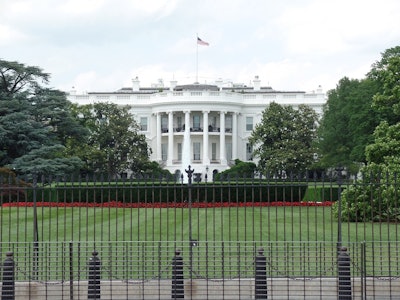
The New Year has come and it may still be early enough that well-meaning resolutions are in force. This pretty well sums up this past political season. Some of the messages we heard on the campaign trail will endure, while others fall into the dustbin of political rhetoric. As the inauguration of Donald J. Trump as 45th president of the United States approaches, political pundits, and some of us who work in “the swamp” known as Washington, D.C., continue to watch for hints of what the new administration will truly mean for commercial and production agriculture. Though falling short on the popular vote, President-elect Trump prevailed in the electoral college due in part to the strong turnout by farmers, ranchers and those involved in agricultural enterprises. Rural citizens wanted the government off their backs and they made their voices heard.
While it is uncertain just what the Trump victory will yield for agriculture and rural America, it is clear that regulatory reform will be on the front burner.
From OSHA dust regulations, ever-morphing FSMA rules, Dodd-Frank impacts on the futures markets or the long list of EPA initiatives to control just about every aspect of commercial enterprise, Mr. Trump has been adamant that he will reduce the regulatory burden. Hopes for action early in 2017 are bolstered by Republican House and Senate leaders signaling that reducing the regulatory burden is also their priority.
There also is high hope for action on Mr. Trump’s pledge to increase infrastructure spending. While his plan is not yet clear in real terms, agriculture’s transportation infrastructure abounds with need, from locks and dams, waterway improvements, ports, bridges, roads, rail and air transport. Too many of these needs have been waiting ... and waiting ... for federal action to repair, replace, expand and maintain agriculture’s ability to receive critical inputs and deliver the commodities to the next link in the chain. However, the outlook for action in this area for 2017 is dim. The operative phrase is “increase spending” — an action tough to sell to a Republican Congress that wants to reduce spending and that has had to resort to continuing resolutions to keep the government open.
On the flip side, Mr. Trump’s attacks on existing and pending trade agreements, particularly the Trans-Pacific Partnership agreement and the long-standing NAFTA, has all sectors of agriculture on edge. Nearly one-third of U.S. agricultural production is destined for export, which in turn supports nearly a million jobs on and off the farm and consistently contributes to a positive trade balance. Many in agribusiness worry about the possible impact of his pledge to withdraw from the TPP and pull out of other existing trade agreements. When one considers that the grain sector is already anticipating balance sheets with more red ink than black, those worries become even more troublesome.
When or how Mr. Trump presses forward on his trade pledge is, literally, the multibillion dollar question.
Commercial and production agriculture will fare far better in this New Year if regulatory reform and infrastructure improvement lead the way on the new president’s agenda. Like all of us, would-be presidents make resolutions. Now it is up to us to encourage Mr. Trump to follow through on his resolutions that are more rewarding for all of agriculture.














